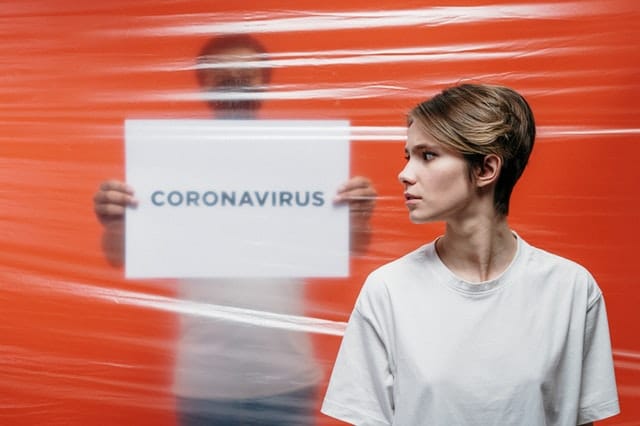Contents
The suggestions in the article are guidance for all members of a household where one or more members are self-isolating in order to minimize the possibility of spreading the COVID-19 virus to the wider community.
Individuals should self-isolate if they have symptoms suggestive of COVID-19, they have laboratory-confirmed COVID-19, or are a person under investigation (PUI) i.e. awaiting test results.
Members of the household and other ‘close contacts’ including intimate partners and caregivers should follow the same personal hygiene routines and maintain the hygiene standards of the domestic environment.

In terms of safety and hygiene, we have divided this article into three sections. Taken as a whole they are equally important. But members of the household will have differing priorities.
- GENERAL CONSIDERATIONS
- HOUSEHOLD HYGIENE
- PERSONAL HYGIENE
General considerations
- Make sure that you understand the needs of the isolating household member(s) [patient(s)] and can help them follow their healthcare provider’s instructions for medication(s) and care. You should help the patient with basic needs in the home and provide support for getting groceries, prescriptions, and other personal needs. Remember the patients may be children or seniors. In either case, you should be aware of any special requirements.
- Monitor the patient’s symptoms. If the patient is getting sicker, call their healthcare provider and tell them the patient’s status (self-isolating, symptomatic, PUI, or has laboratory-confirmed COVID-19). This will help the healthcare provider’s office take steps to keep other people in the office or waiting room from getting infected. Ask the healthcare provider to call the local or state health department for additional guidance. If the patient has a medical emergency and you need to call 911, notify the dispatch personnel that the patient has, or is being evaluated for, COVID‑19
- The patient should INTERACT with other members of the household AS LITTLE AS POSSIBLE and should wear a facemask whenever around other people
- Anyone who needs to touch or have contact with the patient’s blood, stool, or body fluids (such as saliva, sputum, nasal mucus, vomit, urine) should wear a disposable facemask and gloves
- Throw out disposable facemasks and gloves after using them. Do not reuse
- When removing personal protective equipment (PPE), first remove and dispose of gloves. Then, immediately clean your hands with soap and water or alcohol-based hand sanitizer. Next remove and dispose of facemask, and immediately clean your hands again with soap and water or alcohol-based hand sanitizer
- As far as possible household members should stay separated from the patient(s) as much as possible. Household members should use a separate bedroom and bathroom, if available.
Household hygiene
- EXCLUDE visitors who do not have an essential need to be in the home
- Household members ONLY should care for any pets in the home
- ‘PATIENTS’ should not handle pets or other animals while sick. Pets may not catch or pass on the COVID-19 virus but they can transfer the virus between one affectionate stroker and another. For more information, see COVID-19 and Animals
- Avoid sharing household items with the patient. You should not share dishes, drinking glasses, cups, eating utensils, towels, bedding, or other items. After the patient uses these items, you should wash them thoroughly (see below “Wash laundry thoroughly”)
- Make sure that shared spaces in the home have good airflow, such as by an air conditioner or an opened window, weather permitting.
- Clean all “high-touch” surfaces, such as counters, tabletops, doorknobs, bathroom fixtures, toilets, phones, keyboards, tablets, and bedside tables, every day. Also, clean any surfaces that may have blood, stool, or body fluids on them
- Use a household cleaning spray or wipe, according to the label instructions. Labels contain instructions for safe and effective use of the cleaning product including precautions you should take when applying the product, such as wearing gloves and making sure you have good ventilation during use of the product
- Wash laundry thoroughly
- Immediately remove and wash clothes or bedding that have blood, stool, or body fluids on them
- Wear disposable gloves while handling soiled items and keep soiled items away from your body. Clean your hands (with soap and water or an alcohol-based hand sanitizer) immediately after removing your gloves
- Read and follow directions on labels of laundry or clothing items and detergent. In general, using a normal laundry detergent according to washing machine instructions will be effective. Dry thoroughly using the warmest temperatures recommended on the clothing label
- Place all used disposable gloves, facemasks, and other contaminated items in a LINED CONTAINER before disposing of them with other household waste
- Clean your hands (with soap and water or an alcohol-based hand sanitizer) immediately after handling these items. (see below).
Personal hygiene
- Perform hand hygiene frequently. Wash your hands often with soap and water for at least 20 seconds or use an alcohol-based hand sanitizer that contains 60 to 95% alcohol, covering all surfaces of your hands and rubbing them together until they feel dry. Soap and water should always be preferred if hands are visibly dirty. Avoid touching your eyes, nose, and mouth with unwashed hands
- Throw out disposable facemasks and gloves after using them. Do not reuse.
FINALLY
Discuss any additional questions with your state or local health department or healthcare provider. Check available hours when contacting your local health department.
We have made this article easy to transmit. All you need to do is………………………?
ALWAYS CALL BEFORE VISITING – AVOID PUBLIC TRANSPORT

